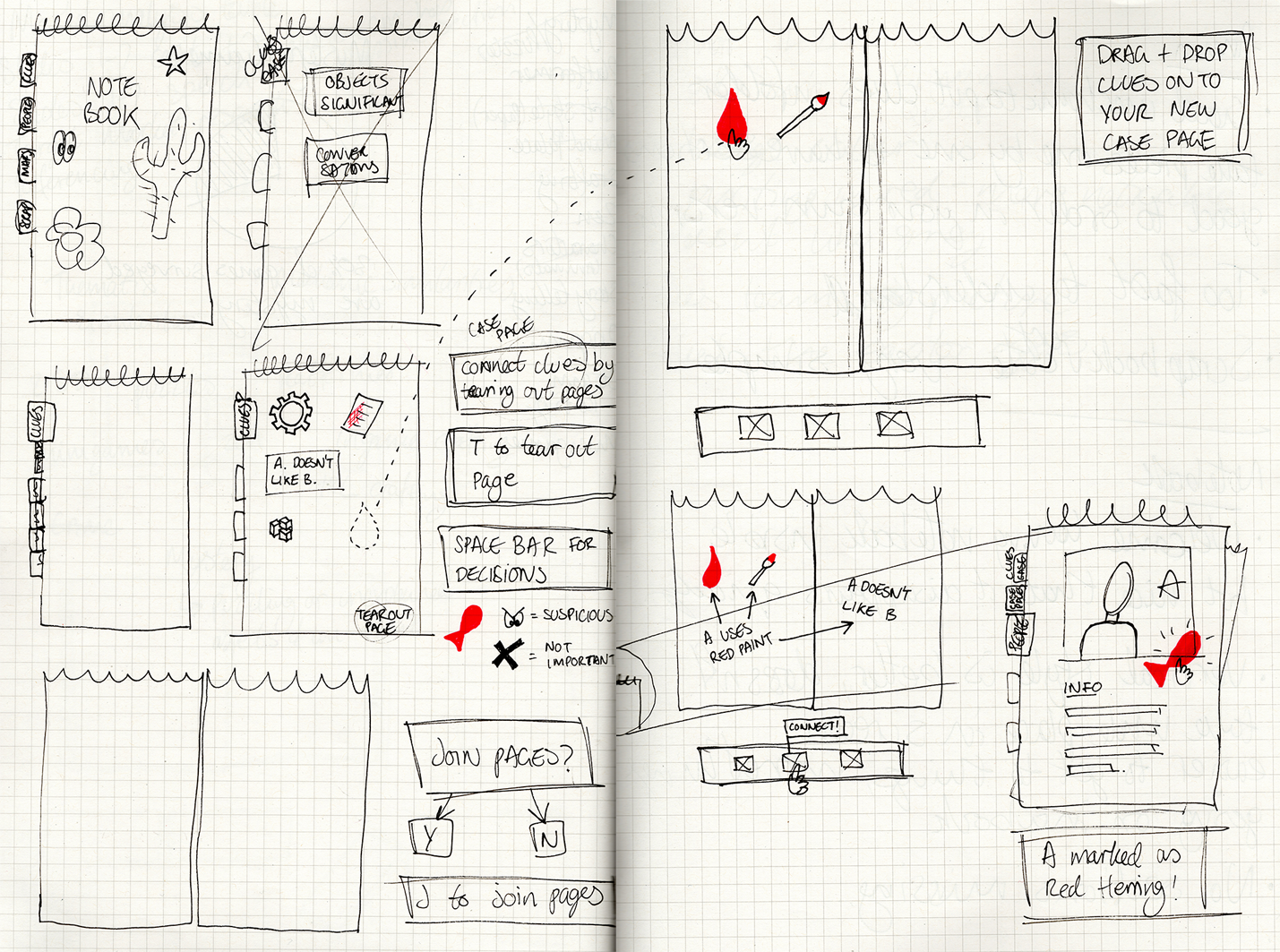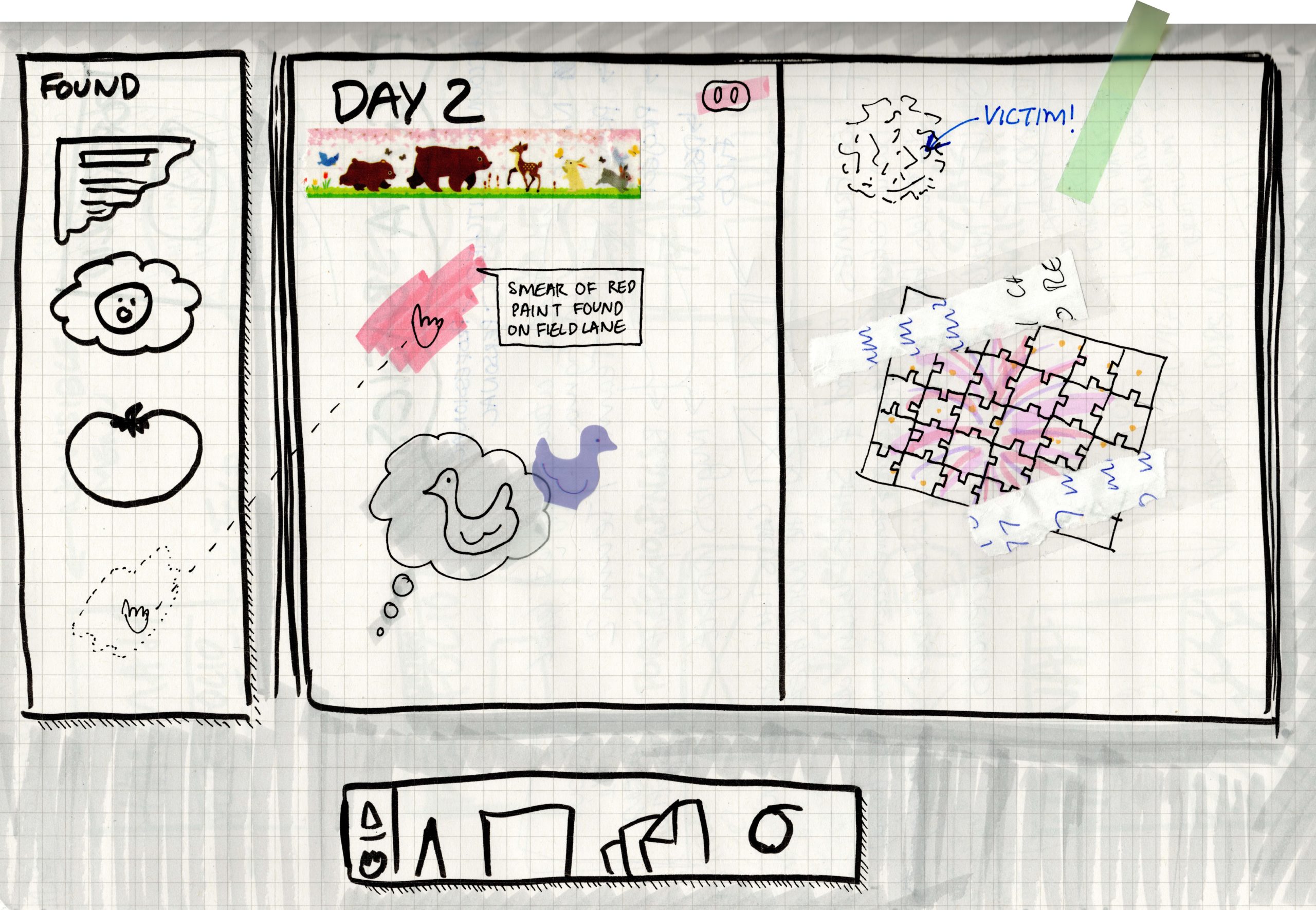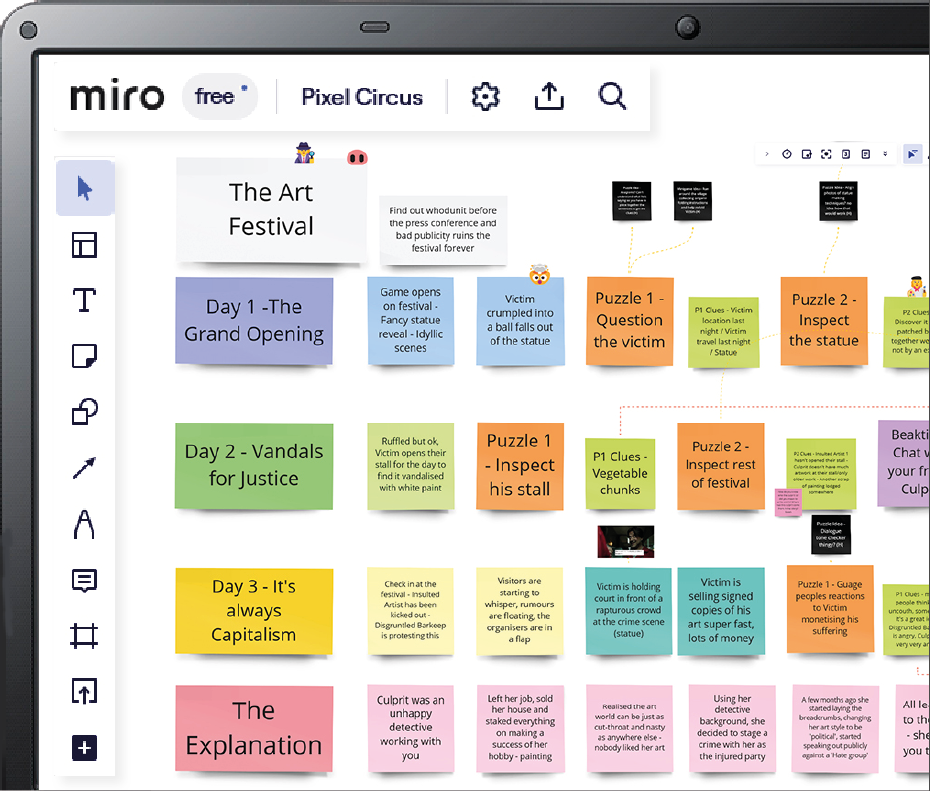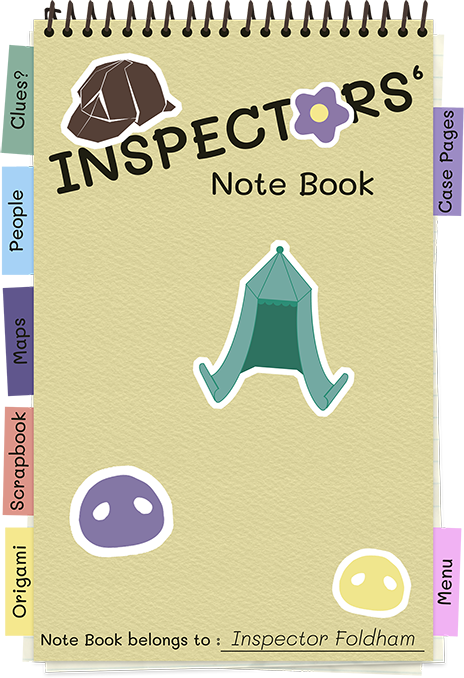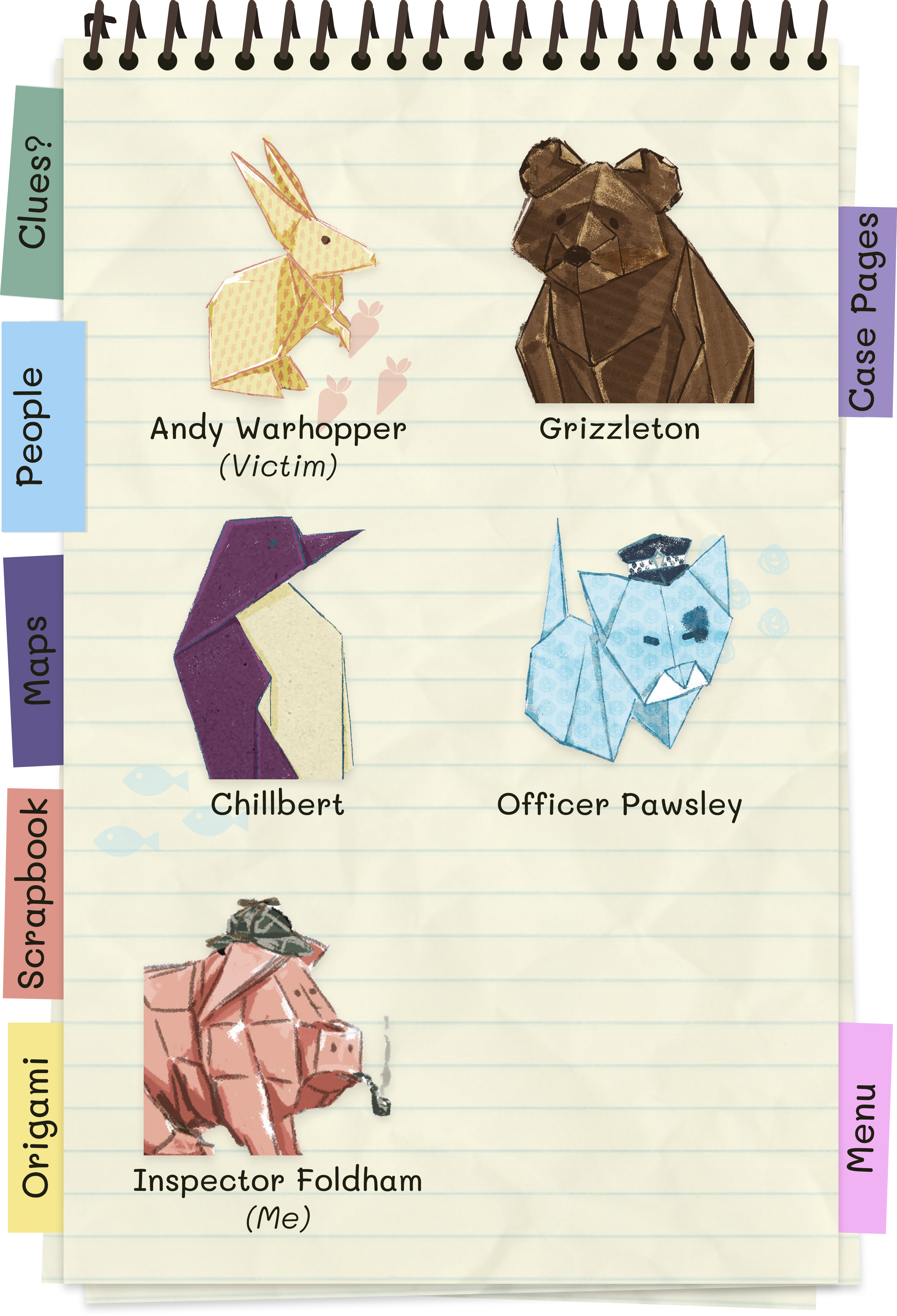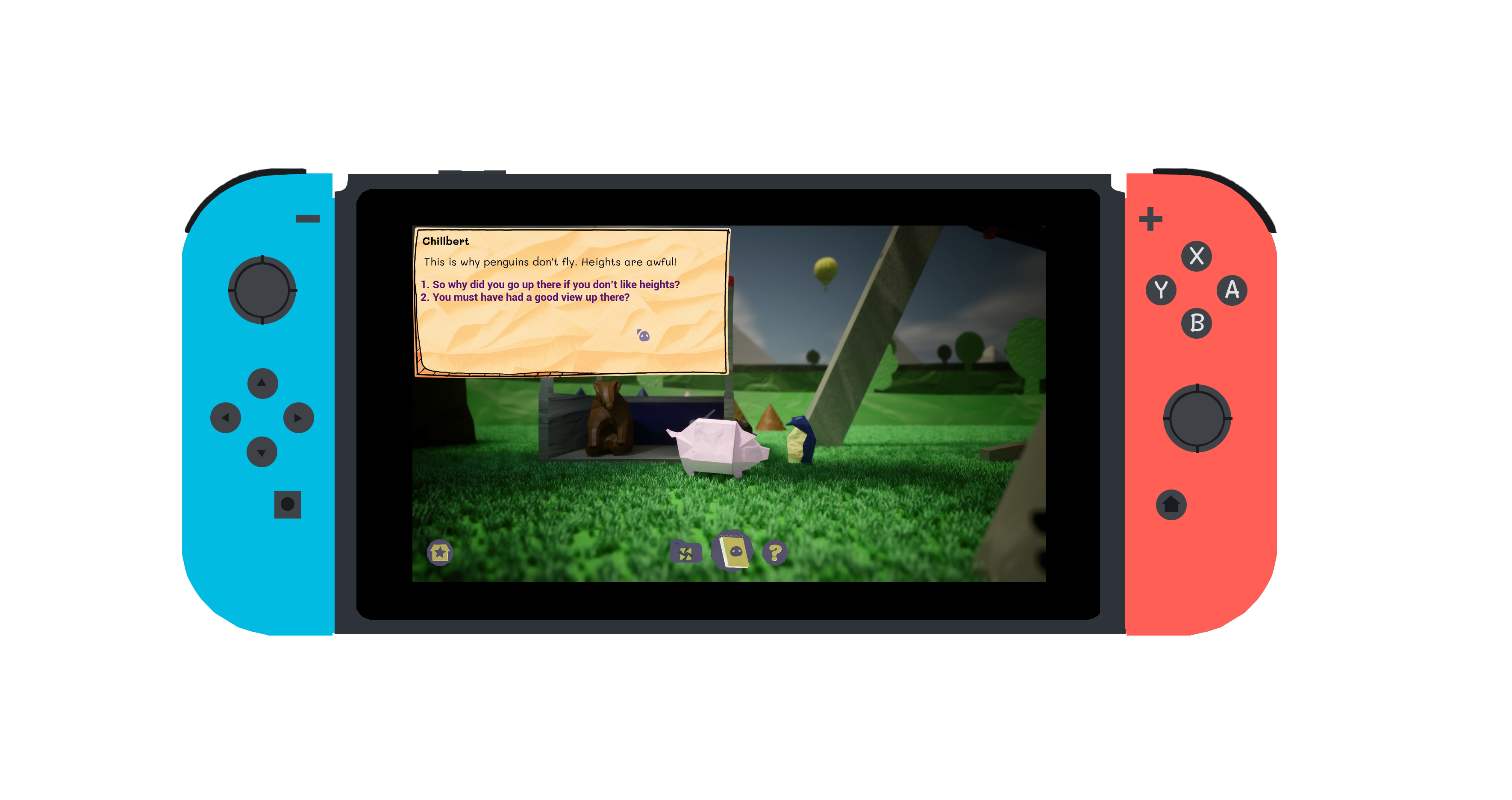A Mystery Unfolded
“In a cross-discipline team of 5 people, develop a game product that makes use of combined genre elements or themes to enhance the overall player experience.”
My role
Collaborated in a distance team with UX and Indie Game students
Researcher, Notebook designer, Lead Copywriter
Photoshop, Figma, Excel, Sharepoint, HacknPlan, User Interviews, Dialogue X, Premiere Pro
Results
In 12 weeks, we developed a functional demo of a creative and innovative blend of concepts, which we pitched successfully to industry professionals.
We combined cosy, crime and platform game genres with an origami art style, an unusual but compelling mash-up.
In a massive brainstorming session, I generated a mixture of one-sentence ideas and game ‘snapshot’ sketches. Once we had a firm idea of the genres, I used a mix of sketching, photography and wireframing to develop the concept further.
The crime and cosy genres have very different themes, so I paid particular attention to how we could combine them effectively.
I conducted a competitive analysis of 47 games to identify our most direct and indirect competitors using a yes/no matrix of our key features.
Many of the games I analysed became key inspirations in further development. For example, I found the concept of a ‘casebook’ is often integral in the crime genre and identified how to write a straightforward detective story without dark themes.
User Journey
A notebook as part of gameplay is a well-established mechanic in several genres, but it is vital to know how and why to use it in crime.
By understanding the norms, I knew the most important features that had to be included and where to break the mould.
Starting with the Information Architecture, I developed a series of rough organisational diagrams.
Developing several different User Journeys was also essential as that would dictate several functions. I created flows for discovering the Notebook, how items found in the world are added to the pages and what a player can do with what they discover.
If I were to develop the game further, I would love to design and test the more complicated mechanics, like the camera function shown in the journey map sketch above.
Development
The Inspector’s Notebook quickly became a central part of our game, the lynchpin that tied the genres and art style into one cohesive product.
After some experimentation, I developed a detective’s vertical Notebook to fit the mental model of an inspector taking notes. I added sections for organising suspects and functions for analysing clues.
Crossing the divide from crime to cosy, I added design and scrapbooking functions dedicated to paper arts and crafts.
During user interviews, players preferred the Notebook to be invisible during gameplay, found the character menu page too constricted, and found the handwriting fonts hard to read.
Writing
As this is a story-based game, I wrote a dynamic storyline with the potential for multiple outcomes based on player choices.
Creating a small cast of characters inspired the dev team to think outside of the box during 3D modelling.
As the crime genre often uses dark themes, I wrote a classic cosy detective story with red herrings and foiled plans to develop feelings of safety and security in the player.
Additionally, I wrote detailed dialogue representing the sarcastic humour of the game and character personalities using DialogueX, a node-based programming system.
Writing the overall architecture of our storyline allowed the team to envision our MVP for the final submission.
User Interface
To bring research and development together for the final game demo, I created a series of Notebook pages representing the most critical aspects of the game.
Preserving the cosy feeling in the high-fidelity mock-up, I chose a more readable font and designed more freedom in the character pages and overall design.
As the game is dedicated to solving a mystery, it was important for the player to organise information in clear sections for clues, other characters and important locations.
Due to project constraints, the Notebook was implemented as static images. However, I would have loved to develop hover states and auditory feedback for navigating and playing with the Notebook.
Reflection
My key takeaways from the project are that trust and communication are critical, especially in a distance context with a brand new team.
This project readjusted my perceptions of UX and its core principles. Designing a game helped me understand that UX is a lens through which we can tackle many problems.
It has also highlighted the importance of feedback. I consistently achieved better results by seeking out and considering other opinions.
Learning new communication methods between the different industries in the team helped me see that an issue has many sides.
For this reason, I love asking ‘naive’ questions, as people often interpret problems differently.







